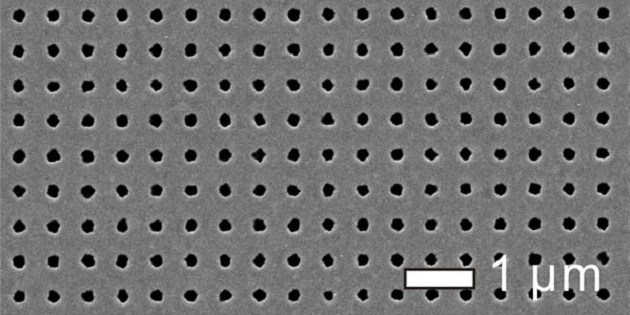Scientists find a simple and cheap way to enhance the light-capturing capabilities of solar panels (silicon wafers) by increasing their surface area using ‘nanoholes’.
In order to make solar PV competitive to conventional sources of producing energy, the cost metric must make sense. Which means using less amount of solar panels to produce more electricity.
To achieve this, scientists have to find a way to increase the total surface area of these solar panels while maintaining the same dimensions–huh?
Yes it is possible; and has been done before by using hybrid solar cells that combine silicon nano-wires with low-cost, photo-responsive polymers.
The increased surface area and cramped nature of nano-wires gives them the ability to capture significant amounts of light for solar cell operations. But these thin, needle-like fragile structures have the characteristic feature of sticking together when the wires become too long.
So scientists from the A*STAR Singapore Institute of Manufacturing Technology and co-workers from Nanyang Technological University solved this issue by carving narrow cavities (‘nanoholes’) into silicon wafers to give them enhanced mechanical and light-harvesting capabilities.
“Our simple process for making hybrid silicon nanohole devices can successfully reduce the fabrication costs which impede the solar cell industry,” says Wang–one of the scientists who worked on the project. “In addition, this approach can be easily transferred to silicon thin films to develop thin-film silicon–polymer hybrid solar cells with even higher efficiency.”
Nanoholes are particularly effective at capturing light because photons can bounce many times inside these openings until absorption occurs. But an understanding of how to fabricate these tiny structures is still lacking. One significant problem, notes Wang, is control of the initial stages of nanohole formation — a crucial period that can often induce defects into the solar cell.
Please consult the publication for more information. Note that it may not be available for free depending on your geographic location.















Comments